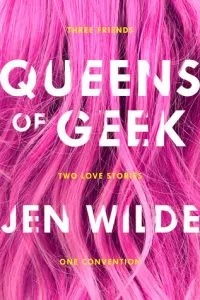
I Can’t Find Myself: Navigating Homogenous Fiction for Diverse Readers
This content contains affiliate links. When you buy through these links, we may earn an affiliate commission.
The term self-insert has always fascinated me. A character who’s a blank slate, who allegedly a group of diverse readers can replace with themselves and lose almost nothing. In YA, my reading category of choice, they’re typically young white women with pale skin, long hair, and they’re clumsy as heck.
So relatable, right?
Not to many, as the majority of people reading were not clumsy white girls. The readership was so much more diverse than the characters that they were provided with. Diverse readers who slotted themselves in and lost everything that made them unique. The experiences of these cis, straight, white girls couldn’t possibly be stretched to accommodate the experiences of those from more marginalized groups.
Then the world of YA started moving away from heroines like Bella Swan and towards nuanced protagonists who came from different backgrounds, races, sexual and gender identities, and many more ways to personalize a character’s experience for diverse readers.
I watched this evolution, and I waited. And waited. And waited. I still couldn’t see myself, a bisexual, autistic, Jewish woman, in any of these people. Mainly, most characters identified as neurotypical, and if they didn’t they had a more socially recognized difference like anxiety or depression. I saw myself in bits and pieces, like glimmers of hope in a sea of characters who I couldn’t understand. I couldn’t imagine falling for someone I had just met, letting them touch me. Even letting a new person into my bubble is a stretch; kissing them was completely out of the question. Where were the girls dealing with sensory overload and trying to explain why they didn’t want people to touch them?
I was still trying to find myself in the women of YA, looking for a type of representation that was typically only afforded to white, cis men like Christopher of The Curious Incident of the Dog in the Nighttime and train wrecks like the main characters of TV’s The Good Doctor and Netflix’s Atypical. They weren’t me. These shows barely managed to get anything right about the people they tried to represent exactly, let alone anyone outside of that bubble.
 And then I found Queens of Geek by Jen Wilde. Finally, an autistic female lead. And she had a love interest? Unthinkable. I devoured it immediately, and it left me hungry for more, but there wasn’t any.
It drove me to write, to be the representation that I so desperately craved. And I hope all of the other people out there who don’t see themselves will, too. Don’t wait for someone else to tell your story. Take control of the narrative.
Write.
And then I found Queens of Geek by Jen Wilde. Finally, an autistic female lead. And she had a love interest? Unthinkable. I devoured it immediately, and it left me hungry for more, but there wasn’t any.
It drove me to write, to be the representation that I so desperately craved. And I hope all of the other people out there who don’t see themselves will, too. Don’t wait for someone else to tell your story. Take control of the narrative.
Write.
 And then I found Queens of Geek by Jen Wilde. Finally, an autistic female lead. And she had a love interest? Unthinkable. I devoured it immediately, and it left me hungry for more, but there wasn’t any.
It drove me to write, to be the representation that I so desperately craved. And I hope all of the other people out there who don’t see themselves will, too. Don’t wait for someone else to tell your story. Take control of the narrative.
Write.
And then I found Queens of Geek by Jen Wilde. Finally, an autistic female lead. And she had a love interest? Unthinkable. I devoured it immediately, and it left me hungry for more, but there wasn’t any.
It drove me to write, to be the representation that I so desperately craved. And I hope all of the other people out there who don’t see themselves will, too. Don’t wait for someone else to tell your story. Take control of the narrative.
Write.









